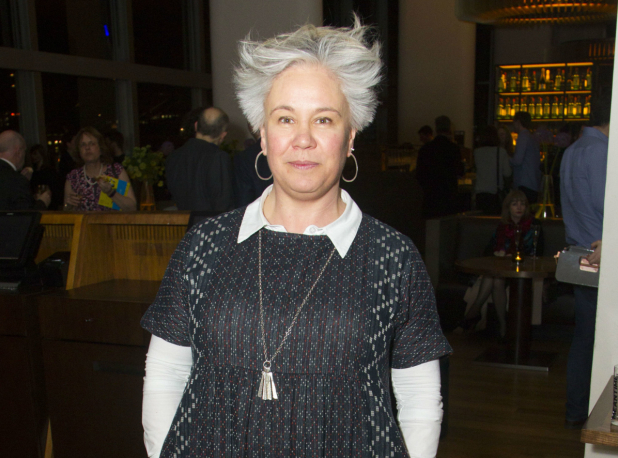Emma Rice's departure is not about lighting

(© Dan Wooller)
How very disheartening: Emma Rice is to leave Shakespeare‘s Globe in 2018, after a tenure of only two years. She’s clearly been pushed, but it’s the speed that’s so shocking. The decision comes at the end of her very first season – a season that has shaken things up without being given the chance to shake down again.
Rice has challenged a hell of a lot in a short space of time – too much, too soon it now seems. Pledging gender parity in Shakespeare (and almost achieving it straight away) is not something that can be done without radical revisions. The same goes for audiences and accessibility. For all we say that Shakespeare’s for everyone, it can just as easily be exclusive and elitist. Accessibility isn’t just a price issue. It’s about taste.
If people feel aggrieved by today’s news, that’s why. The changes she’s made have sought to open Shakespeare up and it’s hard not to feel that the Globe board is closing him back down again.
Rice writ her intentions in big neon letters right from the off. The words 'Rock the Ground' blazed over her opening show, A Midsummer Night’s Dream. It was a riot of colour, lit up in blues and pinks, and mic’d up for good measure. Katy Owens tore up the space like a lusty little Puck, and there were bursts of Bowie and Beyonce.
There’s been a small culture war waging on the South Bank ever since. Traditionalists grumbled about the tech – this singular space designed for a pre-electric age being lit up like any other, its unique acoustic undercut by amps. There were carps about the verse speaking, and cavils about chopped-up texts. Imogen, one senses, was the final straw: Shakespeare’s Cymbeline rewrought.
Accessibility isn’t just a price issue. It’s about taste.
Despite that, there’s no denying that it’s been a success. Each production has had its own distinct artistic purpose – and that’s genuinely felt new at the Globe. Rather than rolling the plays out on rotation, Rice’s choices have felt like cultural interventions. Take Caroline Byrne‘s Irish-set Taming of the Shrew and its unforgiving approach to the play’s problems. "The best Shrew I’ve ever seen," as my colleague Sarah Crompton wrote.
In fact, the Globe’s own press release boasts as much: "Emma’s mould-breaking work has brought our theatre new and diverse audiences, won huge creative and critical acclaim, and achieved exceptionally strong box office results."
That, from the Globe’s CEO Neil Constable, is one hell of a statement – the last part in particular. Not just strong sales, but "exceptionally strong," and that at a theatre that already played to 85 per cent capacity year in, year out, bringing in £10 million in ticket sales. Constable’s words imply improvement. If so, and it will be fascinating to see the figures, isn’t the Globe cutting its nose of to spite its face?
The argument is absurd. It puts the architecture before the art and, worse still, before the audience.
The sticking point, it seems, is technology and the board has decided that, in future, "the theatre programming should be structured around ‘shared light’ productions." Wrapped up in that is an insistence on what the Globe was built for: "as a radical experiment to explore the conditions within which Shakespeare and his contemporaries worked."
This is, I’d argue, absurd. It puts the architecture before the art and, worse still, before the audience. The stubbornness of it becomes clear the moment you really consider the conditions of today’s Globe – planes flying overhead, concrete underfoot and prostitution generally frowned upon. If the board is serious about exploring those conditions, then even ‘shared lighting’ is pushing it. All those floodlit evening performances that come down after dark need to go.
Are some people allowed to experiment where others aren’t?
Besides, there are two ways to think about the Globe and its conditions – as architecture and as space. The first dictates an aesthetic: codpieces to go with the thatched roof and so on. The second dictates a relationship with the audience – and Shakespeare’s audience weren’t there for a history lesson. They went to be entertained, to see their lives reflected onstage. Rice is true to that. Not original practices, but original spirit.
Let’s be clear, though: the Globe wasn’t a heritage operation before Rice took over. There were modern dress productions under Mark Rylance – a black-tie Macbeth and a Dream in pyjamas – as well as others dedicated to various original practices, single sex casts and proper pronunciation. Dominic Dromgoole kept the costumes authentic, but chopped the stage up with walkways and thrusts.
The sense now is that some experiments are more permissible than others. Perhaps its that some people are allowed to experiment where others aren’t.
Make no mistake: this isn’t an argument about electric lighting and amplification, whatever the Globe board says. It’s much deeper than that. It’s about who gets to make Shakespeare, for whom and how. If we insist on doing things as they’ve always been done – and what’s original practice if not that – nothing will change. We’ll get the same people making the same theatre for the same audiences forever.










